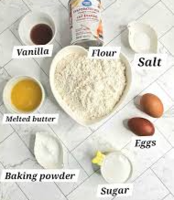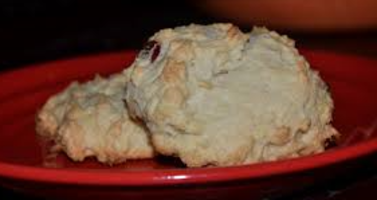Have you ever tasted the delightful crunch of freshly made African buns? These golden, puffy treats have been a staple in many West African households for generations, bringing families together around kitchen tables with their irresistible aroma and satisfying texture.
African buns, known by various names across different regions including puff-puff, mikate, and bofrot, are beloved for their perfect balance of sweetness and that signature crunch that makes them utterly addictive.
From gathering the freshest ingredients to achieving that golden-brown exterior that gives way to a soft, airy interior, this tutorial will equip you with all the knowledge and techniques required to make these treats like a pro.

What Are African Buns?
African buns are deep-fried dough treats popular throughout West Africa, particularly in countries like Nigeria, Ghana, Cameroon, and Sierra Leone. Unlike their softer cousin puff-puff, African buns are characterized by their crunchier exterior and slightly denser texture.
Some people prefer them plain, while others dust them with powdered sugar or drizzle them with honey for added sweetness. In some regions, they’re even served with spicy sauces for a delightful contrast of flavors.
Essential Ingredients for Crunchy African Buns

For the Buns:
- 3 cups all-purpose flour
- 1/2 cup granulated sugar
- 2 teaspoons active dry yeast
- 1/4 teaspoon salt
- 1 teaspoon ground nutmeg
- 1/2 teaspoon ground cinnamon (optional)
- 2 large eggs, at room temperature
- 1/4 cup unsalted butter, melted
- 1 cup warm milk (around 110°F)
- 1 teaspoon vanilla extract
- 4 cups of vegetable oil
For Serving (Optional):
- Powdered sugar for dusting
- Honey or maple syrup for drizzling
- Cinnamon sugar mixture
Equipment Needed
Make sure you have these kitchen items ready before you begin:
- Large mixing bowl
- Medium saucepan or deep fryer
- Candy or deep-fry thermometer
- Stand mixer or wooden spoon
- Measuring cups and spoons
- Slotted spoon
- Paper towels
- Cooling rack
- Small ice cream scoop or two tablespoons (for portioning the dough)
Step-by-Step Preparation Instructions
Prepare the Yeast Mixture
- In a small bowl, combine the warm milk (ensure it’s not too hot as it will kill the yeast) and 1 tablespoon of the sugar.
- After adding the active dry yeast to the liquid, let it sit for five to ten minutes, or until it is activated and foamy.
Make the Dough
- In a sizable mixing bowl, mix together the salt, flour, other sugar, nutmeg, cinnamon-if using.
- Leave a space in the center like a well to hold dry ingredients
- Activated yeast mixture, melted butter, eggs, and vanilla extract should be added.
- Combine all ingredients until a sticky dough is formed. You can use a wooden spoon at first, then switch to kneading with your hands, for about 5-7 minutes until smooth and elastic or use a stand mixer with a dough hook attachment.
- Although the dough will be a little sticky, it should come away from the bowl’s sides.

First Rise
- The dough should rise for around an hour, or until it has doubled in size, then, placed in a warm environment.
- Use a clean kitchen towel or plastic wrap to cover the bowl.
- Learning how to make crunchy African buns requires patience during this rising stage, as it develops the flavor and texture.
Punch Down and Rest
- Let the dough rest for another 10 to 15 minutes after it has risen, then gently punch it to release the air bubbles.
- The dough is simpler to work with after this quick secondary rest.
Heat the Oil
- When the dough is resting, add the vegetables oil into a medium saucepan or deep fryer to a depth of at least 3 inches.
- Heat the oil to 350°F (175°C). Using a thermometer is crucial for maintaining the right temperature.
- The correct oil temperature is one of the most important factors in how to make crunchy African buns successfully.
Shape and Fry the Buns
- To keep your hands from sticking, lightly oil them.
- Take small portions of dough (about 2 tablespoons each) and shape them into balls.
- For extra crunchiness, shape the balls slightly flattened rather than perfectly round.
- Carefully drop the dough balls into the hot oil, being careful not to overcrowd the pan (fry in batches of 4-5 depending on your pan size).
- Fry each batch for about 3-4 minutes, turning occasionally, until they are golden brown on all sides.
- The key to learning how to make crunchy African buns is achieving that perfect golden color without burning.
Drain and Cool
- Using a slotted spoon, remove the buns from the oil and place them on paper towels to absorb excess oil.
- Transfer to a cooling rack after a minute to prevent them from becoming soggy.
Serve
- The ideal way to eat African buns is while it’s warm.
- If desired, dust with powdered sugar, drizzle with honey, or toss in cinnamon sugar while still warm.
Important Tips for Success
Temperature Control
- Make sure your milk is warm but not hot (around 110°F) when activating the yeast.
- Maintain oil temperature between 340-360°F throughout the frying process.
- If the oil is too hot, the buns will brown on the exterior too quickly and stay undercooked inside.
- If the oil is too cool, the buns will absorb too much oil and become greasy.
Dough Consistency
- The dough should be sticky but manageable. Add a tablespoon of flour at a time if the dough is too moist
- Add teaspoon of milk at a time if the dough is too dry, until the proper consistency is achieved.
- Properly kneaded dough should be smooth and elastic, pulling away from the sides of the bowl.
Frying Technique
- Avoid packing the pan too full, as this decreases the oil temperature and causes the buns to get mushy.
- To guarantee uniform browning, turn the buns often while they are frying.
- For extra crunchiness, you can fry the buns a second time for about 30 seconds after they’ve cooled slightly.

Flavor Variations
- Add 1 ripe mashed banana to the dough for banana-flavored buns.
- Mix in 1/4 cup of cocoa powder for chocolate buns.
- Incorporate 1 tablespoon of orange zest for a citrusy twist.
- Learning how to make crunchy African buns with different flavors allows you to customize them to your preference.
Storage Tips
Knowing how to properly store your African buns is just as important as learning how to make crunchy African buns in the first place:
Short-term Storage
- Store completely cooled buns in an airtight container at room temperature for up to 2 days.
- Place paper towels between layers to absorb any moisture and maintain crunchiness.
Long-term Storage
- For up to three months, store unfrosted African buns in a freezer-safe container.
- To keep layers from adhering, separate them with parchment paper.
- Warm after thawing at room temperature in a 300°F oven for 5-7 minutes to restore crunchiness.
Reheating
- To regain crunchiness, reheat room-temperature buns in an oven at 350°F for about 5 minutes.
- Avoid using the microwave as it will make the buns soggy.
Troubleshooting Common Issues
Even when you know how to make crunchy African buns, you might encounter some challenges. Here’s how to address them:
Buns Are Too Dense
- You might have added too much flour or not allowed enough rising time.
- Next time, be precise with measurements and ensure the dough doubles in size before frying.
Buns Are Doughy Inside
- This typically occurs when the oil is overheated, resulting in the exterior browning before the interior cooks.
- Maintain proper oil temperature and try making slightly smaller buns.
Buns Absorb Too Much Oil
- Oil temperature was likely too low.
- Make sure to maintain 350°F throughout the frying process.
- Don’t overcrowd the pan as this drops the temperature.
Buns Lack Crunchiness
- Try flattening the dough balls slightly before frying.
- Consider double-frying: fry once until cooked through, cool slightly, then fry again briefly at a higher temperature (370°F) for extra crunch.
- Ensure the freshness of your baking powder if your recipe includes it.
Buns Don’t Rise Properly
- Your yeast might be old or inactive.
- The milk might have been too hot and killed the yeast.
- The environment might have been too cold for rising.
Serving Suggestions
Now that you’ve mastered how to make crunchy African buns, here are some delightful ways to serve them:
- Breakfast: Serve warm with a side of fresh fruit and a cup of coffee or tea.
- Snack: Enjoy plain or dusted with powdered sugar as an afternoon treat.
- Dessert: Serve with a dollop of vanilla ice cream and drizzle with honey or chocolate sauce.
- Party platter: Arrange on a serving plate with various dipping sauces like chocolate, caramel, or fruit compote.
Health Considerations
While learning how to make crunchy African buns is a delightful culinary adventure, it’s good to be aware of some health considerations:
- These are deep-fried treats and should be enjoyed in moderation as part of a balanced diet.
- For a slightly healthier version, you can air-fry them at 380°F for about 8 minutes, though the texture will be different.
- Take into consideration these modifications if you have dietary restrictions:
- Gluten-free: Use a gluten-free flour blend with xanthan gum.
- Dairy-free: Substitute plant-based milk and vegan butter.
- Vegan: Use plant-based milk, vegan butter, and replace eggs with 1/4 cup of applesauce or mashed banana per egg.
Cultural Significance
Understanding the cultural context enhances the experience of learning how to make crunchy African buns:
- In many West African countries, these treats are often prepared for special occasions and celebrations.
- They are frequently eaten on religious holidays, weddings, and festivals.
- In some communities, making these buns is a social activity where family members gather to help with preparation.
- By mastering how to make crunchy African buns, you’re participating in a rich culinary tradition that has been passed down through generations.
FAQs
What makes African buns crunchy?
The crunchiness in African buns comes from several factors. First, the proper oil temperature (350°F) creates that perfect crispy exterior. Second, slightly flattening the dough balls rather than keeping them perfectly round increases the surface area for crispiness. Finally, some recipes incorporate a higher sugar content, which caramelizes during frying to add extra crunch.
Can I make African buns without yeast?
Yes, you can make a version of African buns without yeast by substituting with 1 tablespoon of baking powder and 1 teaspoon of baking soda. However, yeast provides that distinctive flavor and texture that makes traditional African buns special.
The no-yeast version will be quicker to make but might not have the same depth of flavor or texture. If you’re learning how to make crunchy African buns authentically, the yeast version is recommended.
Why are my African buns too oily?
If your buns are absorbing too much oil, the most likely culprit is oil temperature. When the oil isn’t hot enough (below 340°F), the dough spends too much time in the oil and becomes saturated. Another cause could be overcrowding the pan, which drops the oil temperature. Finally, not allowing the dough to rise properly can result in dense buns that absorb more oil.
How do I keep African buns crispy for longer?
Before storing, let the buns cool fully on a wire rack to preserve their crispness. Place them in an airtight container with paper towels between layers to absorb moisture. When ready to serve, reheat them in a 350°F oven for 5 minutes to restore crispiness. Never use the microwave to reheat, as it will make them soggy.
Can African buns be made ahead of time for a party?
Absolutely! The dough can be made up to 24 hours ahead of time and refrigerated. When ready to use, allow it to come to room temperature for about 30 minutes before shaping and frying. Alternatively, you can fry the buns up to 2 days ahead, store them properly, and reheat in the oven before serving.
Conclusion…
Mastering how to make crunchy African buns is a rewarding culinary adventure that connects you with a rich heritage of West African cooking. These delightful treats, with their perfect balance of crunchiness on the outside and softness on the inside, are sure to become a family favorite in your household.
They’re a testament to the beautiful simplicity of traditional recipes that have stood the test of time. So, heat up that oil, prepare your dough, and embark on the delicious journey of how to make crunchy African buns that will have everyone asking for seconds.
